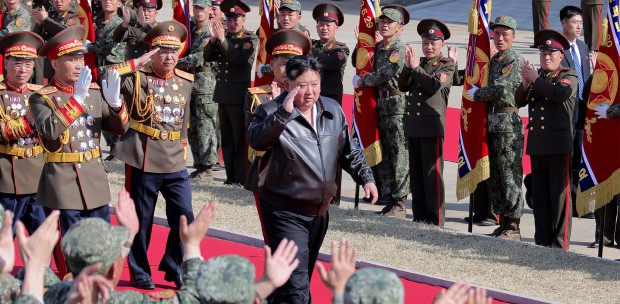A NEW set of evidence has surfaced to match the body that has been lying at Kuala Lumpur Hospital morgue since Feb 15 to Kim Jong-nam.
This evidence, which emerged after the police yesterday officially declared the body as Kim-Jong-nam’s, is uniquely traced to the estranged half-brother of North Korean leader Kim Jong-un, who was assassinated in klia2 on Feb 13.
This newly-established secondary evidence that the authorities have gleaned from their efforts to officially identify Jong-nam is the scatter of 21 moles on his face.
Among the more prominent ones include three moles lined near one of his eyes and one to the right of his lips.
The New Straits Times’ Special Probes Team also learnt that Jong-nam’s dental records showed that he had dentures on, although not in entirety.
It is understood that in drawing this unique link, exclusively to Jong-nam, the authorities had, among others, established the number of moles on his face, as well as their distribution patterns.
In the case of Jong-nam, they said, this secondary identifier would be considered as “conclusive” when matched to Jong-nam.
“For fingerprints, what will be sought are ‘six matching points’ for a positive match... in the case of his moles, there are plenty to match,” a source with knowledge of the ongoing identification process told the team.
It is learnt that during this “matching process” forensics experts would measure the distribution of the moles’ scatter.
The referral sample would require the moles to be those located on parts of the body that are more visible. And in Jong-nam’s case, it would be his face.
This means that if “mole A” on the subject is, for instance, located 2mm from his left nostril or “mole B” as well as the rest on the face match those of the referral sample, a hit is established.
Dental records, meanwhile, fall under the category of primary identifiers, which also include fingerprints and DNA samples.
The Special Probes Team sourced from Japan an “official document” that carried an undisputed image of Jong-nam.
It is a book published in 2012 titled My Father Kim Jong-il and I. The author, journalist Yoji Gomi, who had made Jong-nam his “subject of interest”, wrote the book after several face-to-face interviews as well as e-mail exchanges with Jong-nam.
On one of the pages in the book written in Japanese is a photograph of Gomi and Jong-nam, taken in Beijing in 2011.
The cover featured a mugshot of Jong-nam in tinted glasses, with many of the moles matched by the authorities clearly visible.
Pyongyang has refused to recognise the body as Jong-nam and maintains that the body was that of one of its citizens, “Kim Chol”, who was murdered that Feb 13 morning.
They have, however, not explained who “Kim Chol” was, despite him having been travelling with a diplomatic passport.
North Korea has also been insisting on being given custody of the body despite Malaysian police standing their ground that the body would only be released to his next of kin.
The NST had, on March 3, frontpaged an image of a tattoo on Jong-nam’s torso, which forensics had since established to be uniquely his.
This was based on a referral sample that was confirmed as “Kim Jong-nam” and not “Kim Chol”.
The tattoo on Jong-nam’s stomach shows a man with oriental features, reeling in one of two Japanese carps.
It matched the one Jong-nam had sent to a Japanese reporter, whom he had known for 10 years.





